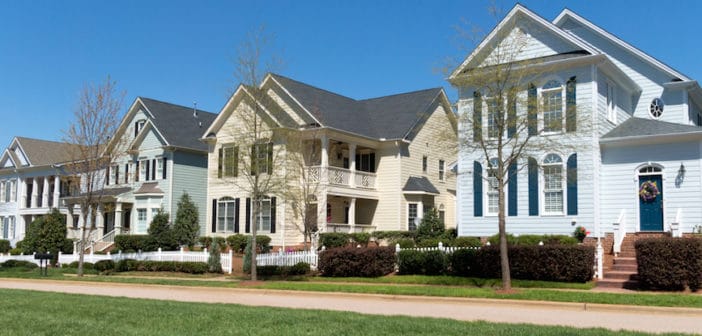 America’s problem with addiction is driving a staggeringly high demand for sober living houses. A recent AP story explores the trend, uncovering both a flawed system riddled with fraud and an impassioned group of people dedicated to helping those in recovery. The epidemic has created a need for group homes that cater specifically to opiate addicts. The explosion in demand, however, calls into question the quality of many sober living homes. “The facilities are rarely run by credentialed professionals…a situation that has prompted at least five states to pass or consider legislation to impose basic rules on how they operate,” the AP’s Carla K. Johnson writes. The prospect of certifying these houses is as welcoming to some people as it is threatening to others.
America’s problem with addiction is driving a staggeringly high demand for sober living houses. A recent AP story explores the trend, uncovering both a flawed system riddled with fraud and an impassioned group of people dedicated to helping those in recovery. The epidemic has created a need for group homes that cater specifically to opiate addicts. The explosion in demand, however, calls into question the quality of many sober living homes. “The facilities are rarely run by credentialed professionals…a situation that has prompted at least five states to pass or consider legislation to impose basic rules on how they operate,” the AP’s Carla K. Johnson writes. The prospect of certifying these houses is as welcoming to some people as it is threatening to others.
Sober Living: Not Just for Alcoholics Anymore
Sober living in the US certainly isn’t new, but the face of its residents is. A Newport Daily News article points out that the demand for sober living isn’t rooted in alcoholism anymore. “Alcohol issues aren’t going away. They’re still there, but it’s just that opiate addiction has gotten the spotlight,” the executive director of a sober living center says in the article. “They’re not dying every day from alcohol abuse. I wouldn’t lose sight of that.” Still, opioid addicts account for the vast majority of clients in long-term recovery. When I checked myself into a treatment center in 2013, everyone around me asked what my “drug of choice” was. I found myself saying, “Oh, just alcohol.” Like it wasn’t a big deal. All around me were patients detoxing from heroin, Vicodin and Percocet. Alcohol was just the background noise in their stories. Even in rehab, I didn’t feel interesting enough.
I’ll also admit to being pretty naïve about the difference between sober living homes and halfway houses. I honestly thought they were the same. Residents in halfway houses get focused counseling as they make sober friends and rebuild their lives. In the US, the Department of Health heavily regulates halfway houses and requires that they provide 24-hour treatment with medical professionals. An academic study published by the National Center for Biotechnology Information (NCBI) examined how “destructive living environments can derail recovery for even highly motivated individuals,” studying 300 people in sober living. They concluded that sober living homes directly influenced addicts’ success in recovery. They also determined that halfway houses, while effective, have as many cons as they do pros, ranging from the limited length of residents’ stay to government funding. Sober homes began to crop up across the US in the late 1960s and early 1970s, emerging as an alternative to halfway houses. Sober living homes don’t have clinical staff, aren’t funded by the government and typically offer residents an open-ended invitation to stay. In short, recovery rests in the hands of the residents.
Certifying Sobriety
In 2014, Massachusetts lawmakers passed a bill that encouraged all sober homes to become “voluntarily certified.” Similar bills are in the works in other states such as Arizona, which ensure these homes don’t prey on addicts with high rent and that they pass basic health regulations. In Massachusetts, that certification involves a training program and annual inspection. By this September, certification will be mandatory if these homes want to receive outside referrals. “Those not certified…won’t be allowed to accept referrals from state prisons, drug courts or detox facilities,” the article says. According to another article on the state certification, referrals account for roughly 70% of sober home residents. If sober homes survive on referrals, they’ll need the certification.
That said, critics still raise their eyebrows over sober housing. As private properties, sober houses escape a lot of scrutiny. Detractors argue that sober houses are nothing more than overcrowded money-makers with no laws in place to prevent the state from doing anything about them. A recent letter to the editor in the Sun-Sentinel pretty much sums up the opposition: “The whole thing is a sham…Gov. Rick Scott continues to support this criminal enterprise by not expanding Medicaid—which would go a long way to treating addicts as medical patients as they should be, in legitimate hospitals and outpatient facilities—and, thus supporting the bogus sober house industry which has supported him in kind.” I feel sorry for people who couch such strong feelings in politics. Unfortunately, these sorts of things make headlines and fuel strong opinions. In 2014, the FBI raided two sober living homes for insurance fraud. The homes attracted alcoholics and addicts who had insurance and ran a scam involving “billing insurance companies as much as $4,500 for urinalysis tests that are not medically necessary.” These exceptions, sadly, perpetuate negative stereotypes about all sober living homes.
Facing the Unknown
The exact number of sober homes in the US remains unknown, though the AP article offers up an eye-opening statistic: “Prescott, Arizona, a city of 40,000, has 169 homes. That’s one home for every 237 people, with more on the way.” The article goes on to say many states are leaning more and more on sober housing. Illinois spent $4.8 million this year on housing parolees in sober living situations, which is up 25% over the last three years. Ohio (where I live) gave $12.5 million in sober home grants, too. For now, most sober homes have little to no government oversight—which is just fine by most people’s standards. “We operate good, clean houses,” one sober home owner says in this piece. “I don’t want some guy in a suit coming in here and telling me how to run them.” One of my good friends who lives in sober living says that his fellow residents have had varying success with sobriety, but “the house eventually finds its own equilibrium.” I’d like to believe this is true for the future of sober living, too. One thing’s for sure, though—imposing any laws on sober living will be as thorny and complex as addiction itself.
Sponsored DISCLAIMER: This is a paid advertisement for California Behavioral Health, LLC, a CA licensed substance abuse treatment provider and not a service provided by The Fix. Calls to this number are answered by CBH, free and without obligation to the consumer. No one who answers the call receives a fee based upon the consumer’s choice to enter treatment. For additional info on other treatment providers and options visit www.samhsa.gov.




